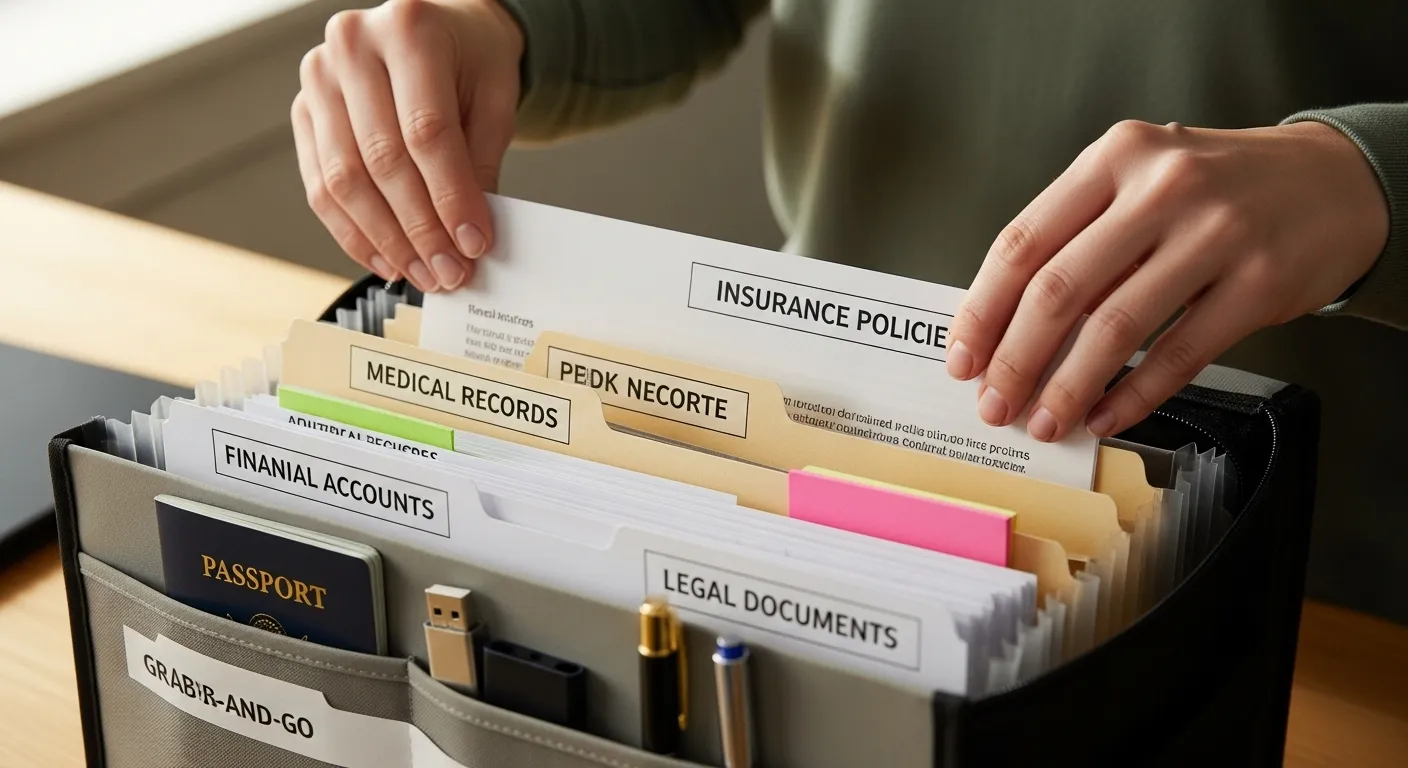
Step 4: Choose a Safe, Accessible Storage Spot
Your Grab-and-Go file is now assembled. Its final resting place is a critical decision, balancing security, safety, and accessibility. You need to be able to retrieve it in seconds, but you don’t want it sitting out in the open.
The ideal location meets three criteria:
1. It’s easy to get to. It should be on the main floor of your home, close to your most-used exit. You shouldn’t have to climb a rickety ladder or move heavy boxes to reach it.
2. It’s in a safe “reach zone.” For optimal safety and accessibility, especially for older adults, store items you need to lift between your waist and shoulder height. Avoid storing a heavy binder on a very high shelf or on the floor where it could be a tripping hazard.
3. It’s protected from environmental risks. Basements are prone to flooding, and attics experience extreme temperature swings, both of which can damage paper and digital media over time. A hall closet, bedroom closet, or the top shelf of a sturdy pantry are all excellent choices.
For added home safety, ensure any tall furniture like bookshelves or filing cabinets are securely anchored to the wall to prevent tipping. You can find more information about preventing tip-over incidents from the U.S. Consumer Product Safety Commission (CPSC).
The “Two-Copy” Strategy for Ultimate Preparedness
For maximum peace of mind, experts recommend a two-location strategy. Your physical Grab-and-Go file lives at home, ready for quick access.
A second, backup copy should be stored off-site. This backup can take two forms:
A Digital Backup: The encrypted USB drive from your binder is perfect for this. Store a copy of this drive in a bank safe deposit box or at the home of a trusted friend or family member who lives in a different town.
A Physical Backup: You can make photocopies of your most critical documents and entrust them to your designated power of attorney or a close relative. This redundancy ensures that if your entire home is inaccessible, your vital information is not lost forever.
Finally, make sure at least one other trusted person knows the location of your Grab-and-Go file. In a medical emergency where you are unable to communicate, this person can retrieve it for you. This is a crucial step in creating a resilient life organization system.


















One Response
Excellent idea that must people never think about before it’s too late.